The Lowdown on Low-Flow Toilets: How They Work and Why They’re Important
Are you ready to revolutionize your home’s plumbing and make a lasting impact on the environment? As our awareness of resource conservation grows, so does the need for innovative solutions. This article will uncover a game-changer in residential plumbing technology: the low-flow toilet. Are you wondering how these modern marvels work and why they’re crucial for the planet and your wallet? Let’s delve into the world of low-flow bathrooms and discover the power of eco-friendly innovation. Get ready to save water, money, and the environment – one flush at a time!
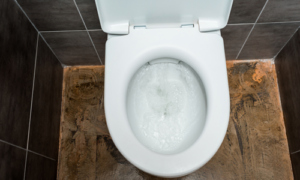
What are Low-Flow Toilets?
Designers design low-flow toilets to use much less water per flush than traditional toilets. While regular toilets use between 3.5 to 7 gallons of water per flush, low-flow toilets consume only 1.6 gallons or even less. This decrease in water consumption is advantageous for the environment and homeowners, who can save money on their water bills.
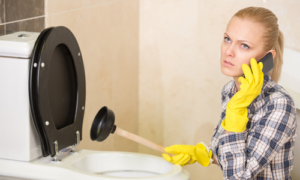
How Do Low-Flow Toilets Work?
There are three main types of low-flow toilets: gravity-fed, pressure-assisted, and dual-flush. Each type has its unique mechanism to reduce water usage while maintaining effective waste removal.
a. Gravity-Fed Low-Flow Toilets
Gravity-fed low-flow toilets are the most common type and work similarly to traditional toilets. When a user presses the flush lever, it causes water from the tank to flow into the bowl, creating a siphon effect that pulls waste and water down the drain. The main difference is that low-flow models use a smaller volume of water and have a more efficient bowl design to ensure effective waste removal.
b. Pressure-Assisted Low-Flow Toilets
Pressure-assisted low-flow toilets use air pressure to create a more forceful flush. When a user presses the flush lever, it causes water to fill a sealed inner chamber, compressing the air inside. This compressed air forces the water into the bowl at high speed, resulting in a powerful flush that uses less water than traditional toilets.
c. Dual-Flush Low-Flow Toilets
With dual-flush functionality, low-flow toilets give customers two flushing choices: a full flush for disposing of solid waste and a reduced flush for liquid waste. The reduced flush uses around 0.8 to 1.1 gallons of water, while the full bloom uses the standard 1.6 gallons. This design allows users to conserve water by choosing the appropriate flush option based on their needs.

The Benefits of Low-Flow Toilets
Homeowners who wish to save money and have a beneficial influence on the environment should choose low-flow toilets because of their many benefits. Let’s look at the key advantages of these eco-friendly fixtures below:
a. Water Conservation: A Win for the Planet
Low-flow toilets can save thousands of gallons of water per year, reducing the strain on water resources and helping to conserve this precious resource. As a result, these toilets play an essential role in encouraging responsible water consumption and safeguarding our planet’s most critical resource for the benefit of future generations. Utilizing a reduced amount of water per flush provides an effective solution for water conservation.
b. Cost Savings: A Win for Your Wallet
With lower water usage per flush, low-flow toilets can substantially decrease water expenses, resulting in enduring financial benefits for homeowners. The initial expenditure in a low-flow bathroom can eventually pay for itself thanks to these savings. Installing water-saving items like low-flow toilets may qualify you for rebates or other incentives in some places.
c. Environmental Impact: A Win for Sustainability
Reducing water usage impacts the energy required for water treatment and distribution, lowering greenhouse gas emissions and contributing to a more sustainable future. Therefore, selecting a low-flow toilet is crucial because it conserves water, reduces carbon footprint, and supports a greener, more eco-conscious lifestyle. By making this simple yet practical choice, you’re contributing to environmental sustainability.
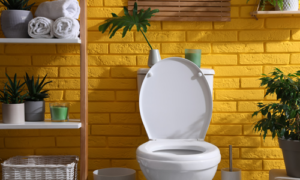
Common Misconceptions About Low-Flow Toilets
One prevalent misconception is that low-flow toilets compromise performance in favor of water conservation. However, this is far from the truth. Engineers have meticulously engineered modern low-flow toilets to ensure efficient waste removal while using reduced water, effectively dispelling this myth. Advancements in technology and design have allowed these toilets to provide the same level of performance as their traditional counterparts while conserving water.
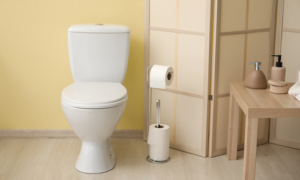
How to Choose the Right Low-Flow Toilet for Your Home
Choosing the proper low-flow toilet for your home involves carefully evaluating several aspects to ensure it meets your needs and preferences. Here are some factors to consider during the selection process:
1. Type of Low-Flow Mechanism
Consider the low-flow mechanism that best suits your requirements. Gravity-fed, pressure-assisted, and dual-flush toilets have unique features and advantages. Assess the pros and cons of each type to determine which one aligns with your needs.
2. Design and Aesthetics
The toilet’s design and aesthetics significantly affect your bathroom’s look and feel. Choose a low-flow toilet that complements your bathroom’s style and décor while maintaining its water-saving functionality.
3. Additional Features
Some low-flow toilets have extra features like a bidet or heated seat, which can enhance your bathroom experience. Consider whether these features are important to you and if they fit within your budget.
4. Brand Reputation and Quality
When researching low-flow toilets, investigate various brands and their standings in the market. Selecting a reputable brand that produces high-quality, reliable low-flow toilets are essential to guarantee long-lasting performance.
5. Reading Reviews
Browse through customer reviews and testimonials to gain insights into the experiences of other users. It can also help you identify potential issues or benefits that need to be apparent from product descriptions alone.
6. Consult a Professional Plumber
Seek advice from a professional residential plumber who can provide expert recommendations based on your needs, preferences, and budget. They can also help you understand the installation process and potential maintenance requirements.
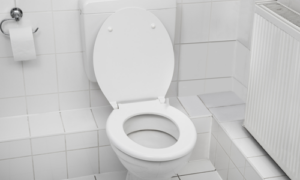
Tips for Maintaining Your Low-Flow Toilet
To ensure your low-flow toilet continues to function efficiently, follow these maintenance tips:
- Regularly clean the toilet bowl and rim to prevent buildup that can hinder flushing performance.
- Inspect the toilet’s components, such as the flapper and fill valve, for wear and replace them as needed.
- Avoid harsh chemicals or abrasive cleaners that damage the toilet’s details or finish.
- Be mindful of what you flush, as low-flow toilets may be more sensitive to clogs from non-flushable items.
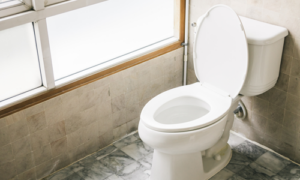
Upgrade to Low-Flow Toilets Today!
Low-flow toilets are a crucial innovation in residential plumbing, offering significant benefits for both the environment and homeowners. By reducing water usage, these toilets help conserve water resources, lower water bills, and decrease the energy required for water treatment and distribution, contributing to a more sustainable future. With modern designs that ensure efficient waste removal while using less water, low-flow toilets are a wise investment for any household.
So, switch to low-flow toilets today and join the movement towards a greener, more eco-conscious lifestyle. Your efforts to preserve our world for future generations will result in financial savings and positive environmental effects.






